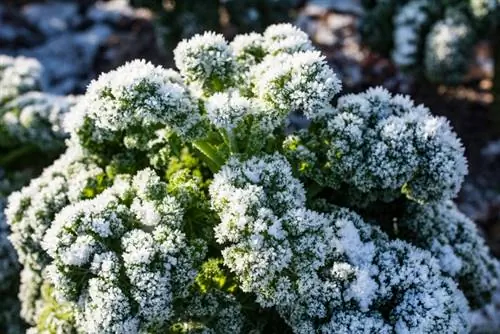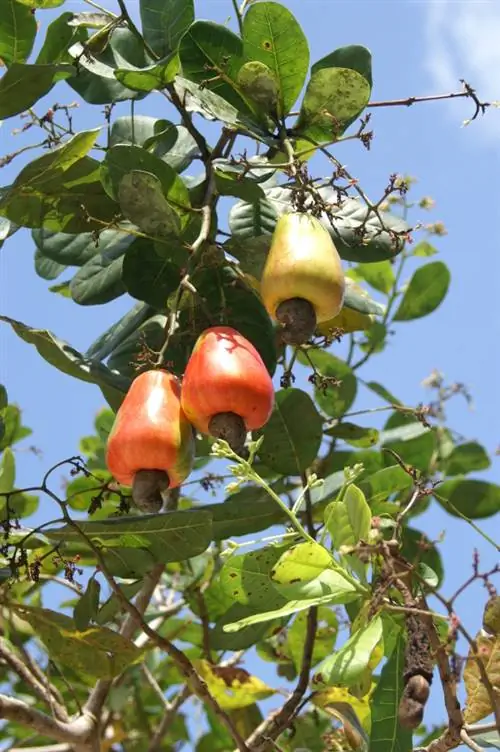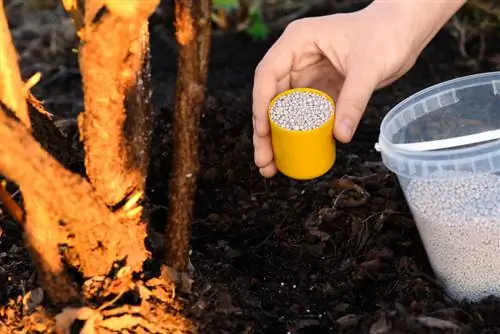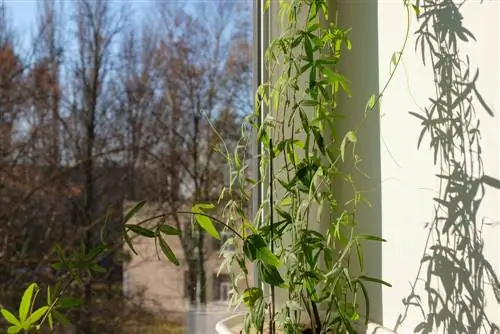- Author admin [email protected].
- Public 2023-12-16 16:46.
- Last modified 2025-01-23 11:20.
It is common knowledge that kale should only be harvested after the first frost. But is that really true? And what happens if it gets multiple frosts? Here you can find out everything about kale and frost.
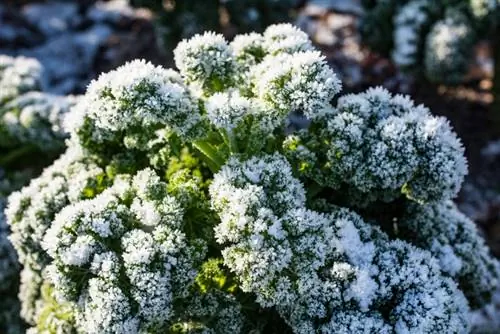
Does kale really need frost to taste good?
Kale develops more sugar instead of starch in frost or low temperatures, which reduces bitter substances and makes the taste sweeter. However, frost is not absolutely necessary to harvest delicious kale; growth simply slows down at low temperatures.
Does kale need frost to taste delicious?
Jain. There is a widespread opinion that when there is frost, kale converts starch and thus bitter substances into sugar. It is not so. However, cold - even at low temperatures above 0°C - leads to changes in the metabolic processes: These are shut down and therefore the kale produces less and less starch. At the same time, photosynthesis continues to take place, which leads to the formation of glucose. This means that when there is frost or low temperatures, the kale produces more sugar than starch, which leads to a reduction in bitter substances and an increase in sweetness.
Harvest kale after the first frost?
Kale is harvested from October to December, often even until January or February. From this we can deduce that kale can also be harvested if it has suffered frost more than once. If you only ever harvest the outer leaves, it will continue to grow and you can continue to harvest. However, as I said, when it is cold, the metabolic processes are slowed down, so that the plant grows more slowly and at some point its growth stops completely.
Simulate frost
You read again and again that you can simply put bitter cabbage in the freezer and simulate the sub-zero temperatures so that the starch turns into sugar. Unfortunately, this magic trick doesn't work because, as explained above, it's not a conversion of starch into sugar, but a change in metabolic processes and that only happens in living plants.
The exception: the Italian variety Nero di Toscana
The Italian kale variety Nero di Toscana is an exception when it comes to harvest time. This variety is also called black cabbage due to its blue-green color (Italian “nero”=black). Like the other types of kale, it is also harvested from October to December, but this cabbage is also tasty before it has felt frost or severe cold. Its taste is slightly reminiscent of broccoli. You can find more information about the different types of kale here.
Tip
Kale can freeze too! Pay attention to the frost hardiness stated on the seed package. Here you can find out the frost hardiness of some types of kale.

